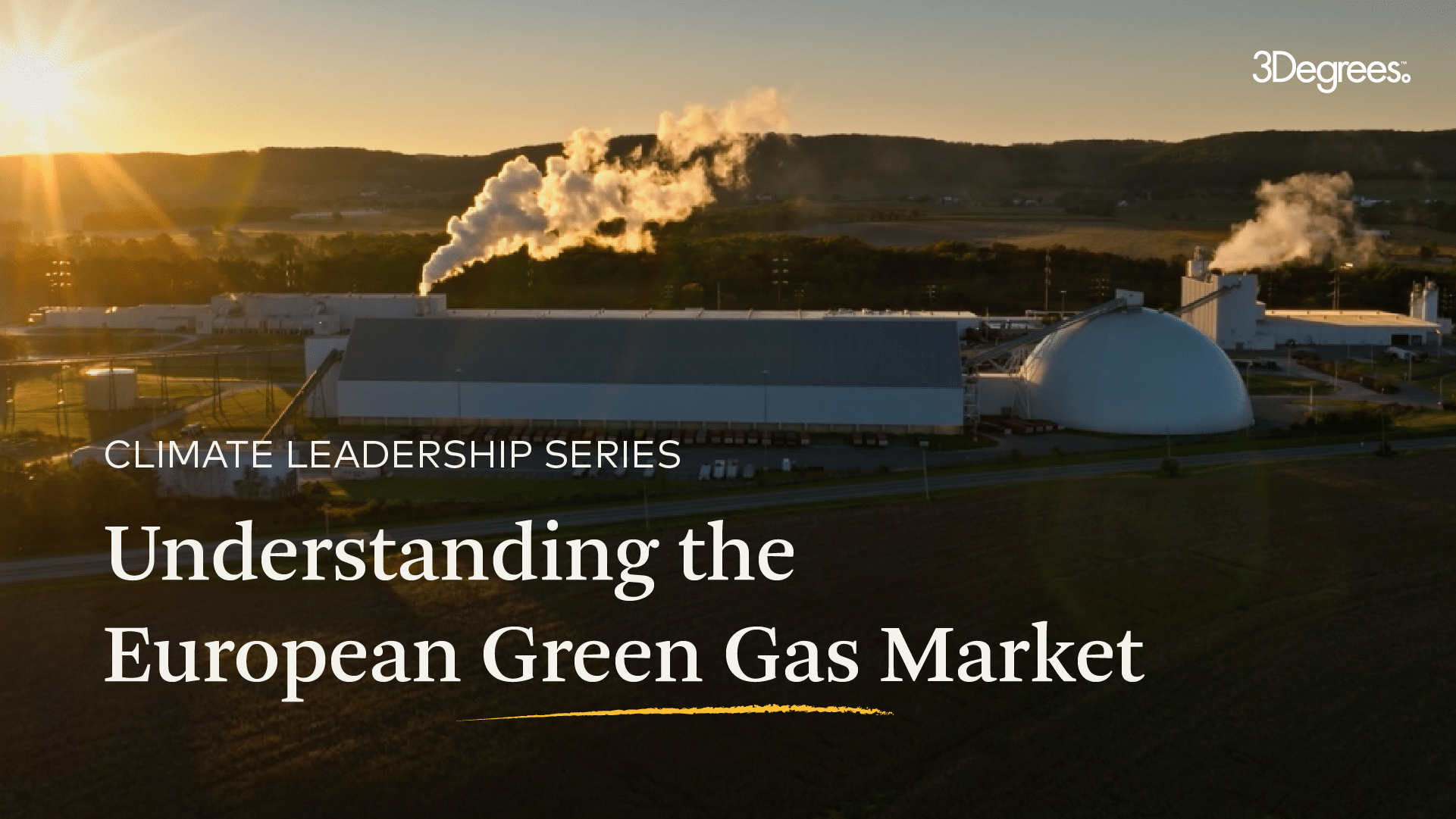In part one of our video series on biomethane, we explored the key benefits of biomethane purchase agreements (BPAs) and whether they are a viable option for accelerating your organisation’s sustainability efforts. Biomethane is an appealing renewable alternative for many reasons, namely since several European countries offer incentives for producing it.
Despite the recent surge in biomethane production, the European market remains underutilised by voluntary corporate buyers. This shows a huge opportunity for corporates to use biomethane to make progress toward their net zero targets.
Before getting involved in this market, buyers should consider an array of factors like feedstock types, sustainability certifications, and production subsidies. Watch our short video, part 2, to better understand EU biomethane market dynamics, and how your organisation can get involved.
Prefer this content as an article? Read on below.
In 2022, Europe saw a significant surge in biomethane production, reaching around 44 TWh, a nearly 20% increase from the previous year. The biomethane market is rapidly evolving, with over 1,300 plants in operation. Despite this growth, biomethane remains a relatively untapped market for voluntary corporate buyers with the exception of the transportation sector, which uses biomethane to meet compliance quotas.
Some European countries offer incentives, such as using biogas and biomethane for power generation which provides lucrative opportunities for producers. Biomethane prices are influenced by factors such as typology of feedstock, sustainability certification, and production subsidies. This makes it challenging for voluntary buyers to navigate the market.
For a variety of reasons biomethane is an attractive renewable energy alternative for corporate buyers. Some countries offer supply-side subsidies for biomethane production, which cannot be used in compliance markets, opening up opportunities for voluntary buyers. Many corporate buyers aim to use biomethane for zero emission claims under the European Emissions Trading System, known as EU ETS, though this is only feasible in select countries with differing regulations. Large scale biomethane use for voluntary disclosures is being facilitated through recent efforts to standardise certificates and ease cross border trading, as can be seen through the ERGaR Certificate of Origin and AIB gas schemes.
Our next episode will discuss the biomethane landscape, including opportunities and risks. Stay tuned.
Interested in learning how biomethane can be integrated into your company’s climate action plan?

